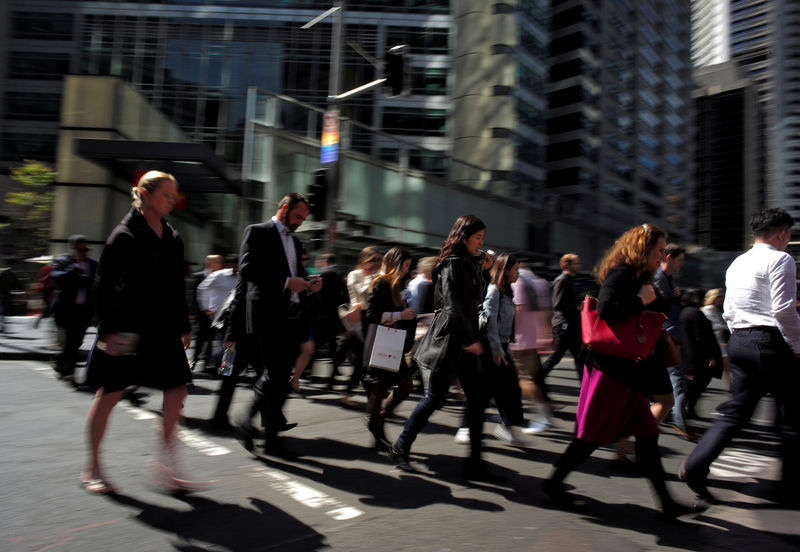By Wayne Cole and Swati Pandey
SYDNEY (Reuters) - Australia's economy sped past all expectations last quarter as rapid population growth fuelled demand for homes and infrastructure, yet there was little sign of wage or price pressures that would warrant a rise in interest rates.
The rousing result marked the 27th year without recession, a remarkable feat given an ever-changing procession of prime ministers and one that owes much to China's insatiable appetite for Australia's resource riches.
Wednesday's data from the Australian Bureau of Statistics showed the economy grew 0.9 percent in the June quarter, from the March quarter when it expanded by a rapid 1.1 percent.
Gross domestic product (GDP) was 3.4 percent higher than a year earlier, ahead even of the 2.9 percent growth boasted by the United States.It was the strongest result in almost six years and handily beat market forecasts of 2.8 percent thanks to upward revisions of previous quarters.
Investors reacted by driving up the local dollar up a quarter of U.S. cent to $0.7215 (AUD=D3>.
"Today's result was impressive and indicates that the economy had a cracking first half of 2018," said Gareth Aird, senior economist at Commonwealth Bank.
"Looking further ahead, we expect the annual rate of GDP growth to continue to run at an above-trend pace."
For the whole year to June, GDP amounted to A$1.84 trillion (£1.03 trillion) in current dollars, or about A$74,000 for each of Australia's 25 million residents.
Fuelling that performance was annual population growth of 1.6 percent, more than double the developed-world average, as Australia attracted more migrants from China and India.
The ruling Liberal-National coalition will be hoping the news distracts voters from the endless internecine warfare that saw Prime Minister Malcolm Turnbull replaced by former Treasurer Scott Morrison.
This was the fifth change of prime minister in eight years and sent the government crashing in opinion polls. An election is due by May next year but risks are for an earlier vote.
Analysts fear the political dysfunction could take a toll on consumer sentiment, just as spending seemed to be making a comeback. Household consumption had rebounded in the June quarter to add 0.4 percentage points to GDP.
DARK CLOUDS?
Despite the solid growth, the economy was still not generating much wage or price pressures.
GDP per person grew only 1.8 percent in the year to June while the household savings ratio declined again last quarter to 1.0 percent, a new decade low.
Plenty of other headwinds loom, including a drought that has scorched the Pacific nation's eastern farm belt.
After a decade of feverish expansion, home prices are now falling across the country - a sizeable drag on consumer wealth given the housing stock is valued at A$6.9 trillion.
A recent hike in mortgage rates by Westpac (AX:WBC) stirred fears the other major banks would follow and pile further pressure on the housing market.
"You need consistent, above-trend GDP growth to absorb the slack in the economy and lead to price pressures," said Su-Lin Ong, chief economist at RBC Capital Markets.
"The question is can growth continue at this pace in the second half of this year and after that, specially if the housing market continues to weaken?"
So far, policy makers are unperturbed. Speaking in Perth on Tuesday, Reserve Bank of Australia (RBA) Governor Philip Lowe played down recent increases in mortgage rates while sounding staunchly upbeat about the economy.
The central bank has kept interest rates at an all-time low of 1.5 percent since mid-2016 and concedes they will have to remain there for some time yet.

($1 = 1.3860 Australian dollars)